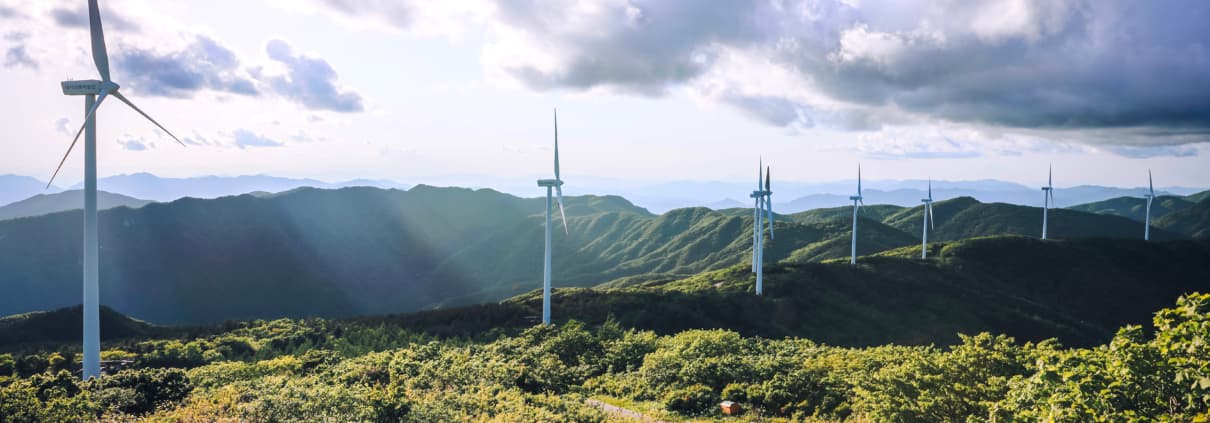RENEWABLE ENERGY IN CHILE: GROWTH, REGULATION AND CHALLENGES

Chile’s goal is to decarbonize its energy matrix. To achieve this development, energy transmission and storage infrastructure is essential.
“There is no relevant client that does not demand 100% renewable energy and that it has the production certificates that accredit that the energy comes from renewable sources,” says Alfredo Solar, general manager of Atlas Renewable Energy in Chile.
The mining sector, Chile’s largest energy consumer, demands certified renewable energy. “The energy transition is not only happening on the supply side,” adds Solar, with more than twenty years in the energy industry. “Customers want to improve or clean their carbon footprint.”
Government objectives
The Chilean government’s goal is to decarbonize the country’s energy matrix by 2025. This involves closing 28 coal plants and investing $30 billion to generate 15 gigawatts of renewable energy and build transmission and storage infrastructure, according to BNAmericas.
Coal plants still supply regulated customers, such as households. However, Solar believes that the National Energy Commission could require the supply of renewable energy for these customers.
Transmission lines and batteries
To incentivize the adoption of renewable energy, the government must invest in the installation of more transmission lines. The lack of these lines is the reason why renewable energy producers have to dispose of some of the energy they generate due to the inability to deliver it to their customers. This practice, known as ‘dumping’, depresses prices. In fact, dumping has increased by 225% compared to 2021, according to Ana Lía Rojas, the executive director of the Chilean Association of Renewable Energy and Storage (ACERA).
“We need transmission lines to be built quickly and for the energy to be transmitted from where the resource is to where the consumption is,” says Solar. Transmission lines must be supplemented with batteries to store energy. “Storage is critical. If solar energy does not fit into the grid, installing a battery makes all the sense in the world: we store the energy during the day and transmit it at night. With that, we de-stress the grid,” he adds.
In this sense, Atlas Renewable Energy is advancing in the development of batteries in northern Chile. For Solar, this region and the state of California in the United States are pioneers in the installation of batteries, as they have a large solar energy production infrastructure as well as transmission restrictions; hence the need to install batteries.
Chile compared to other Latin American countries
The Chilean Ministry of Energy has set a goal that by 2030, 60% of electricity should come from non-conventional renewable energy sources. To contribute to achieving this goal, Atlas Renewable Energy Chile has projects totaling 3GW, including contracts for the development and operation of three wind farms.
Currently, Atlas Renewable Energy has three operational plants (Quilapilún, Javiera and Sol del Desierto), with a combined installed capacity of over 450 megawatts of renewable energy. In addition to Chile, Atlas has investments in Uruguay, Brazil, and Mexico. Among these countries, Chile is the most advanced, where renewable energies have grown the fastest and have been installed in the highest proportion in relation to the system. “Chile is a country where practically all renewable energy companies want to be and invest in,” says Solar, despite its smaller size compared to Mexico or Brazil.
Growth has also faced regulatory challenges. “It is a very big challenge to process all the projects, especially wind projects,” says Solar. It takes years for an environmental process to be ready, in addition to sector-specific permits. It can take five or six years from the decision to start a project until it generates energy. “Efforts need to be made to expedite these processes.”
The need for a stable regulatory framework
In Chile, the energy market is privatized, with the state playing a regulatory and supervisory role. To keep the business profitable, the conditions must be stable, as energy investments are long-term. “It’s crucial to have a reliable regulatory framework that guarantees that investors can do business for the next thirty years.” These conditions must make it possible to repay investments and earn profits.
In partnership with Castleberry Media, we are committed to caring for our planet. Therefore, this content is environmentally responsible.
Share This Entry


